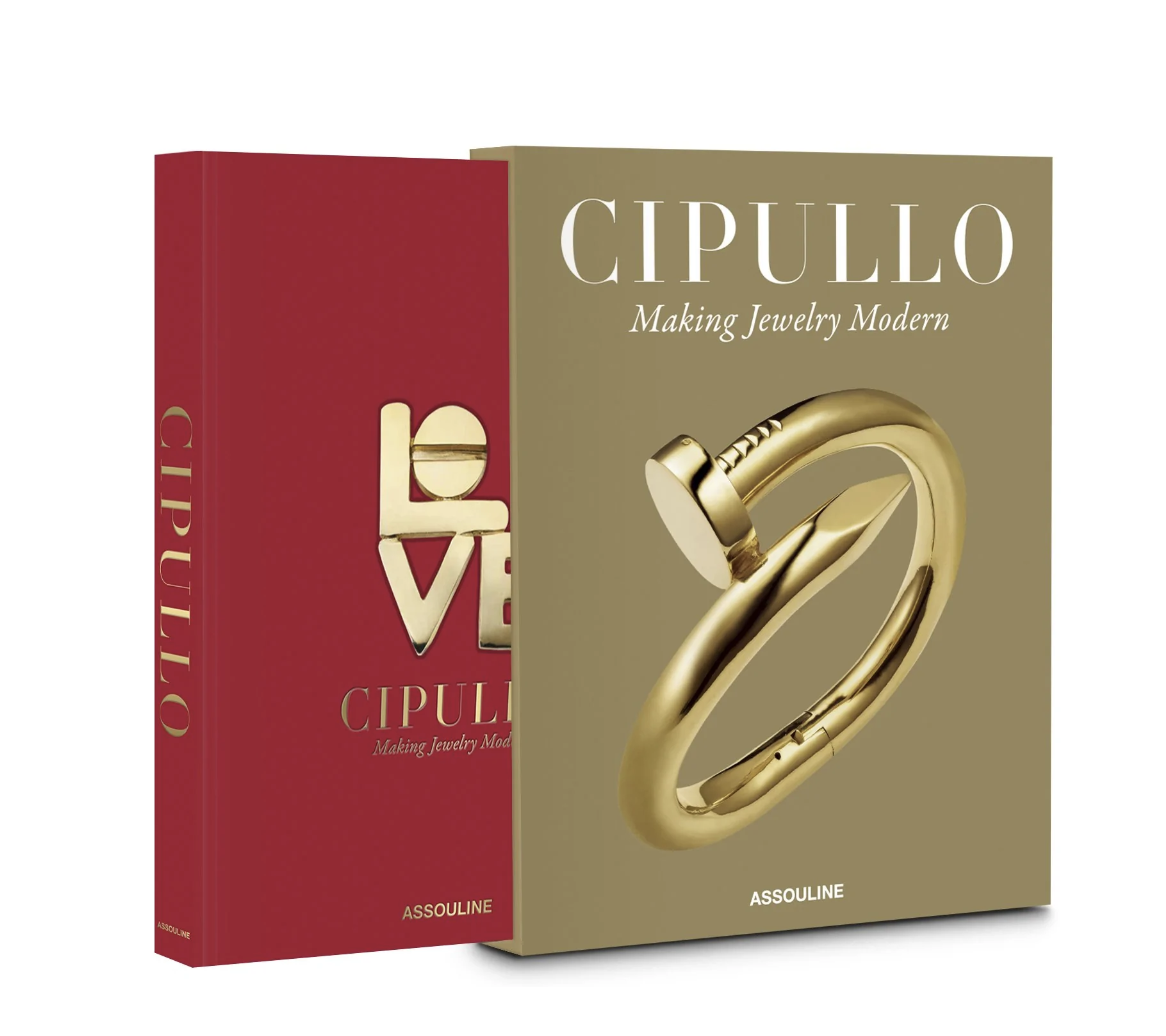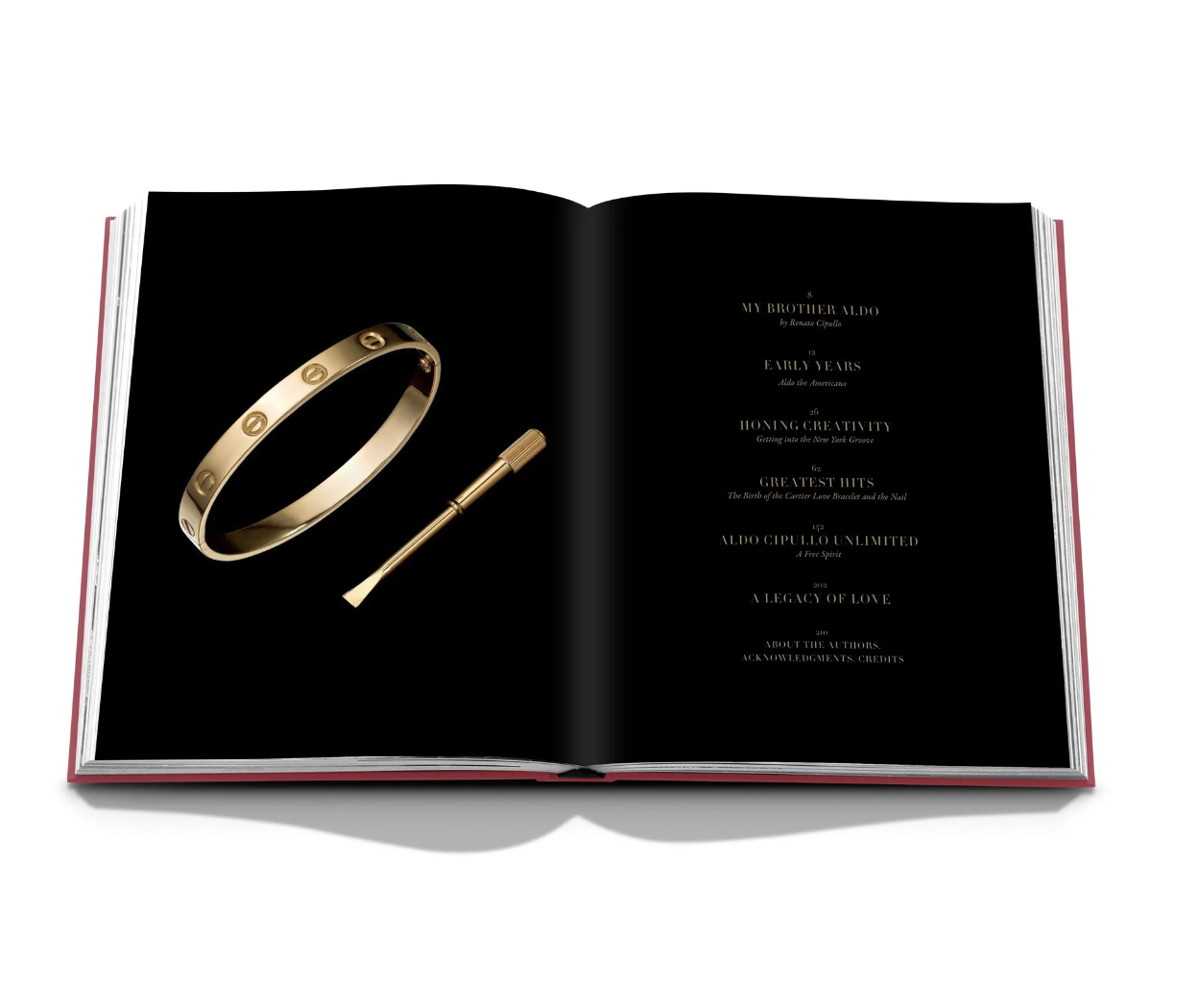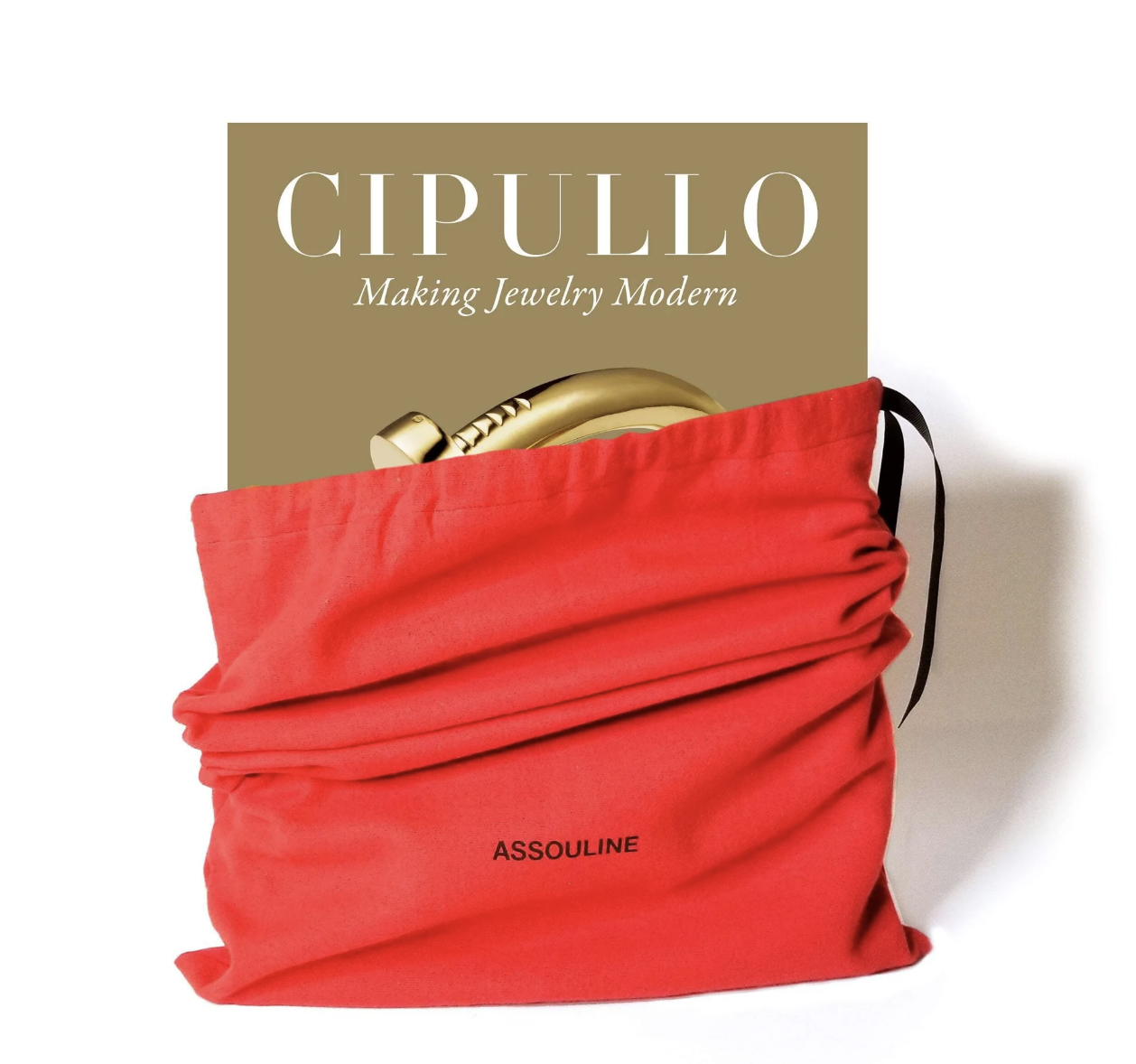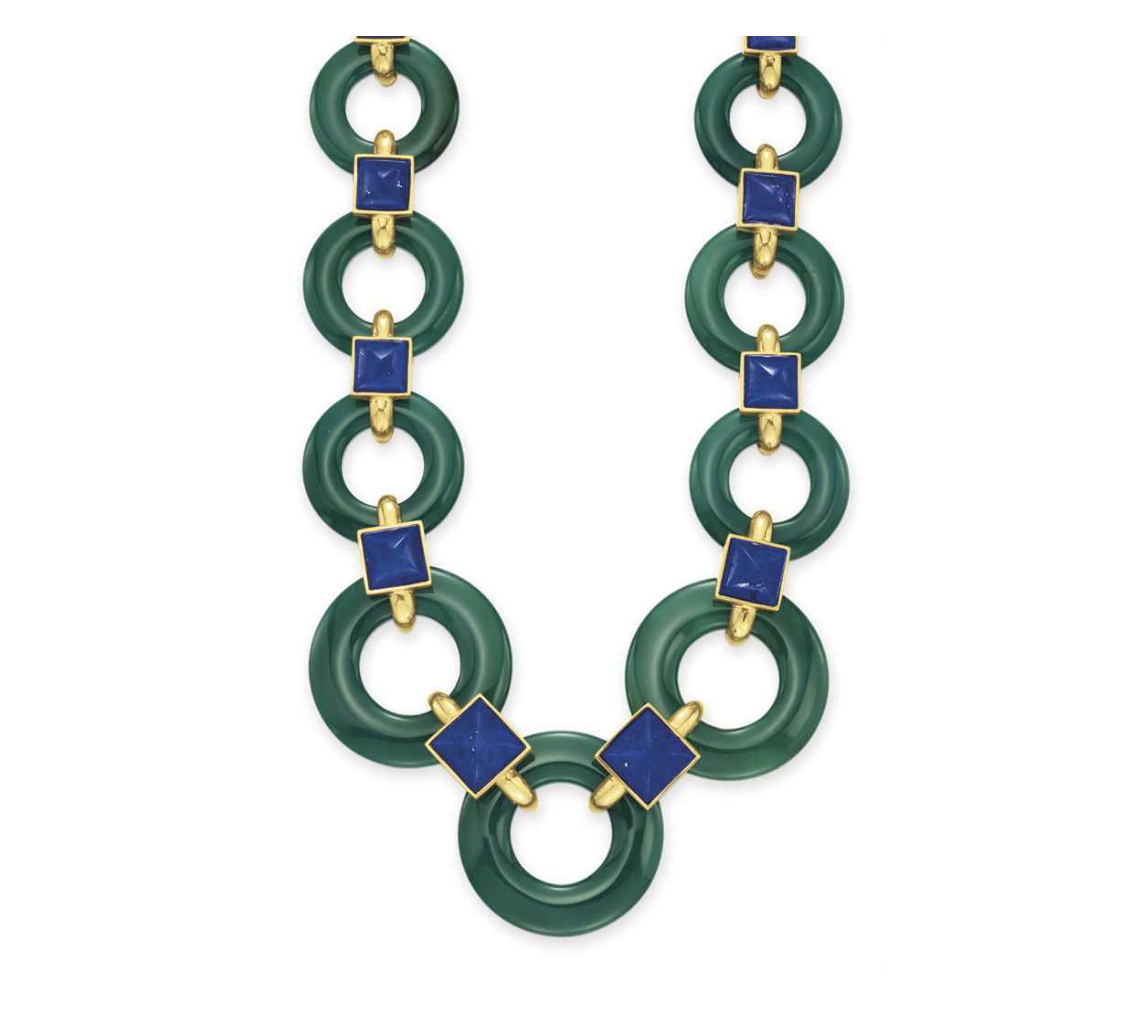Aldo Cipullo found love with Cartier
Discover the story of the man behind some of the most iconic and Googled jewellery in the world to date: Aldo Cipullo .
Aldo Cipullo in a Cartier Boutique
Courtesy Renato Cipullo. All Rights Reserved.
Born in Naples, Italy in 1935, Aldo Cipullo was the son of a costume jeweller and the eldest of five children. From a young age, Aldo helped his father Giuseppe in the sales department of their family-owned store. Giuseppe was keen for him to learn the tricks of the trade, but Aldo’s interests at the time lay elsewhere. The handsome young man, whose charisma was as big as the Stetson hat he wore and earned him the nickname “Americano”, was at the time inspired by other creative disciplines. He decided to study architecture in Florence before a short spell in acting, but his love for all things American never died. At the time, American culture in postwar Italy and celebrities Marlon Brando and James Dean were infiltrating the traditional Italian lifestyle. In 1959, Aldo set off to live the American Dream and fell in love with New York City.
After graduating from Manhattan’s School of Visual Arts, Cipullo worked as a designer for American jeweller David Webb and then Tiffany & Co where he worked with Gene Moore. He befriended Andy Warhol and quickly became part New York’s elite.
In 1969, he moved over to Cartier and created a piece that would forever change the course of his career. Only one year into his new job, Cipullo created the iconic Cartier Love bracelet followed by another stupendous design “Juste un Clou”.
“Aldo Cipullo is not particularly well-known, except to real jewellery lovers. Very few people know that he created Cartier’s two most emblematic models” says Julie Valade Director of the jewellery department at Artcurial. “He was ahead of his time, extremely modern and made a lot of unisex models, which was a novelty in jewellery at that time” she adds.
The ultimate collector's item. The Cartier Love Bracelet designed by Aldo Cipullo.
A Love Affair gone wrong
Ironically, the 1969 design of the Love Bracelet stems from a broken relationship, one that saw a tormented Aldo take pen to paper in the early hours of the morning, desperate to hold on to the last vestiges of his relationship by designing a safe piece of jewellery that would lock and last forever, like his memories. His modern iteration of an age-old love token was inspired by his love for American hardware stores and his intent on democratising jewellery. Unlike many designers of today, Cipullo understood the real purpose of jewellery and that is to communicate, commemorate but also connect physically and emotionally.
Although a Cartier staple today, the Love Bracelet was in fact originally proposed to Tiffany but the American luxury jewellery and specialty retailer rejected the design. As a consequence, Cipullo left Tiffany and instead proposed it to Cartier New York.
In an extract from the book The Cartiers, best-selling author Francesca Cartier Brickell, granddaughter of Jean-Jacques Cartier, recounts:
The captivating story of the family behind Cartier and the three brothers who turned their grandfather’s humble Parisian jewelry store into a global luxury icon—as told by a great-granddaughter with exclusive access to long-lost family archives.
“In New York around this time, an Italian designer hired under [Robert] Kenmore, Aldo Cipullo, was credited with inventing the love bracelet. This idea of singling out a designer marked a change from the previous Cartier policy of designer anonymity, but Kenmore and his new sartorially elegant President of Cartier Inc., Michael Thomas, believed it would resonate with an American audience (Tiffany had been doing it for some time already with success). Composed of two gold semicircles attached with two small screws (using the tiny screwdriver provided), the love bracelet was intended to be almost impossible to put on or remove by oneself. “Love,” Cipullo said at the time, “has become too commercial, yet life without love is nothing—a fat zero. What modern people want are love symbols that look semi-permanent— or, at least, require a trick to remove. After all, love symbols should suggest an everlasting quality.” The love bracelet was big news from the start, as Cartier New York marked the 1970 launch by giving twenty-five pairs away to celebrity couples, including Elizabeth Taylor and Richard Burton, and soon everyone from Frank Sinatra to Sophia Loren to Cary Grant was in on the act. Not popular with air- line security personnel (it caused delays at the X-ray machines when passengers left their screwdriver at home) or feminists (who saw it as akin to a chastity belt), the love bracelet was great publicity for the firm. In another surprising departure from Cartier’s traditional approach, Michael Thomas (who had previously worked for the multi-brand retailer, Neiman Marcus) experimented in this period by selling co-branded products such as Cartier Rolex watches and jewelry with popular French jeweler, Dinh Van, and Canadian designer Roger Lucas.”
Juste un Clou
Aldo Cipullo Gold 'JUSTE UN CLOU' bracelet
Two years after designing the Love Bracelet, Aldo came up with another iconic design that linked hardware with love: Juste un Clou.
Product of another sleepless night, the Clou, which means ‘nail’ in French, was inspired by a book on Christianity, which led Aldo to ponder what the greatest gift a man could give is. His thoughts led him to believe that, like Christ for mankind, life was the answer. In no time, he had drawn “Juste un Clou”. A nail, symbol of Christianity but also a symbol which represents NY’s industrial element.
Interestingly enough Julie Valade explains that the Clou wasn't really appreciated until Cartier re-released it recently.
Cipullo went on to design other collections for Cartier whilst working independently and eventually left Cartier to focus on his own brand. Sadly after that, although beautiful, his designs never out-shined the two iconic models.
In 1984, at the young age of 48, Cipullo passed away of a heart attack.
Gone but not forgotten, Cipullo’s life work has recently been celebrated in a book entitled ‘Cipullo: Making Jewelry Modern’. Written by Vivienne Becker with the help of his brother Renato, who manages the Cipullo archive, the book was published by Assouline.
Cipullo as an investment
Despite Cipullo not being known to the wider public, an original Love Bracelet from the 70s appears to be more valuable. Julie Valade explains “a Cipullo Love bracelet’s opening price at auction starts from 3/4000 €, whereas more recent models start from 2/3000 €. The design differs slightly in weight, however, the principle is exactly the same. Over time, the mode has evolved and has been designed in different ways: white gold, with diamonds, with coloured stones, etc. However, like in all aspects of design, original editions are always more sought after than re-editions. It is amusing really, as there was a time when nobody was buying these bracelets anymore that had been “seen too much”. We saw the prices go up 4/5 years ago; today everyone keeps them because they have become fashionable again, so the prices are increasing. When I started, we sold them by the weight of gold.”
Aside from his designs from Cartier, Cipullo’s pieces only very rarely come up for auction. “In my time in the industry I’ve witnessed very few pieces from him pop up, such as beautiful articulated necklaces, rings made of chrysoprase, onyx or carnelian” confirms Valade.
Unfortunately, his brand name jewellery is not particularly sought after by collectors as only very few people know him other than for his contribution at Cartier, where he spent 10 years. He had his brand too for several years, but the power of Cartier is difficult to forget, she adds.










